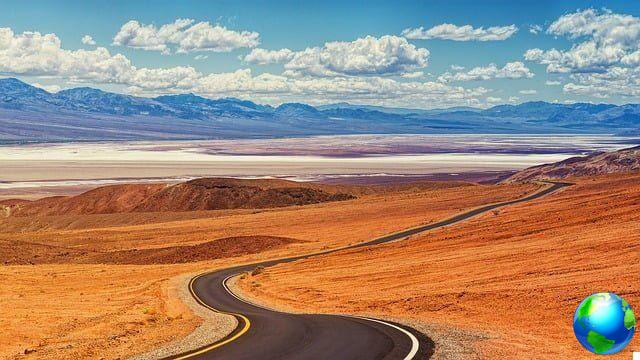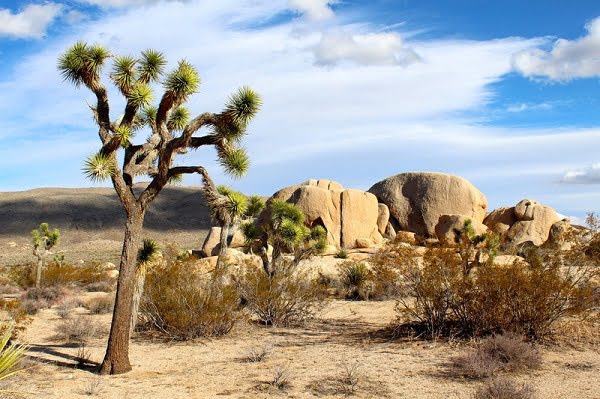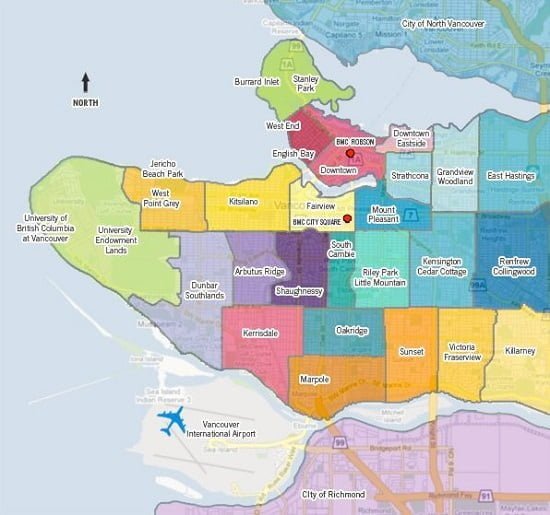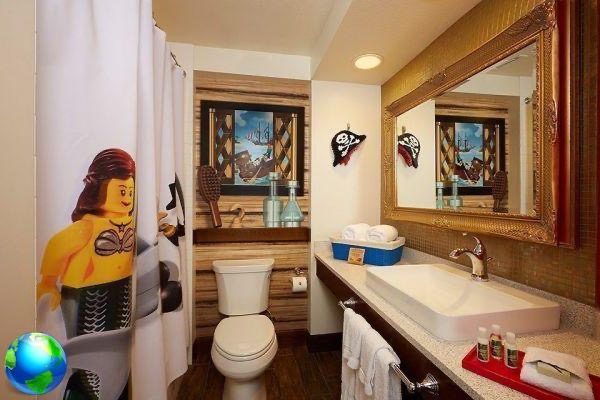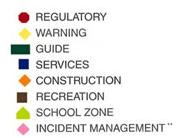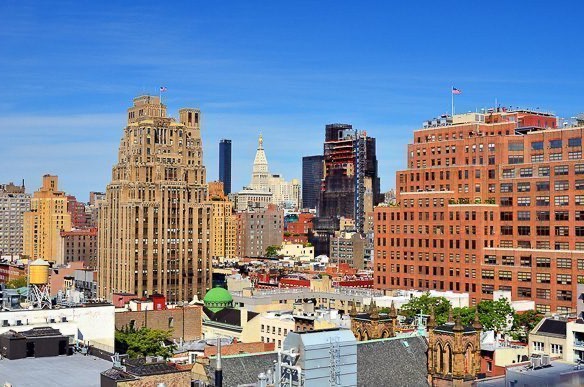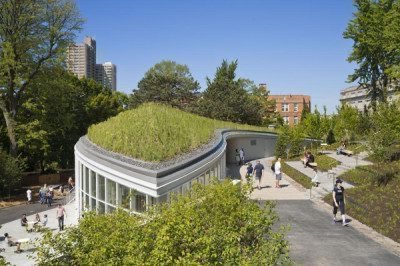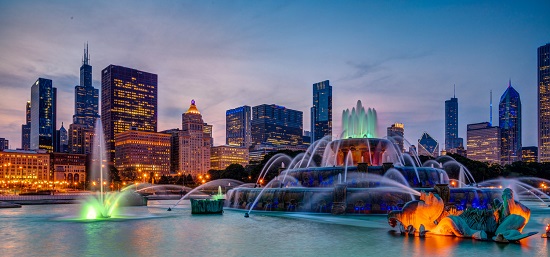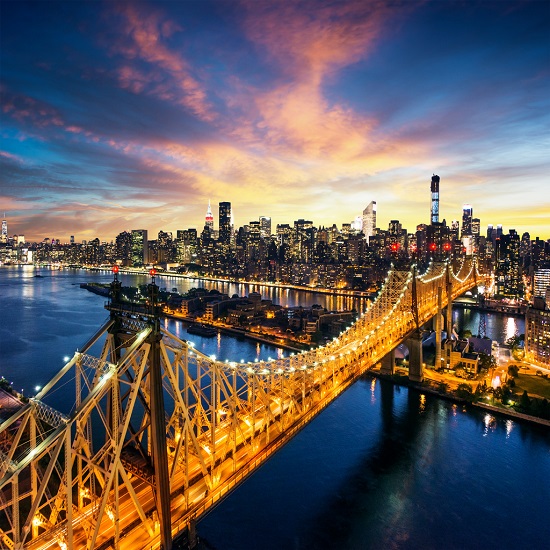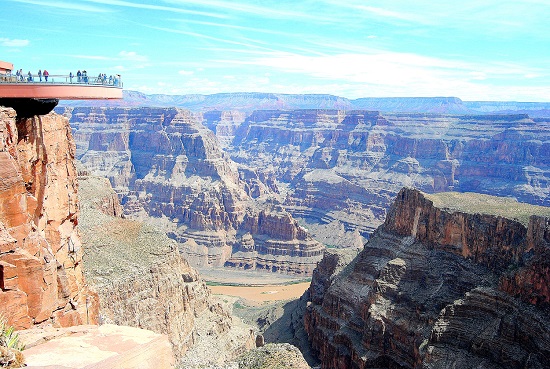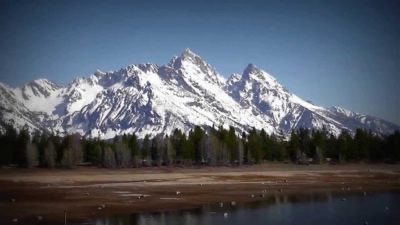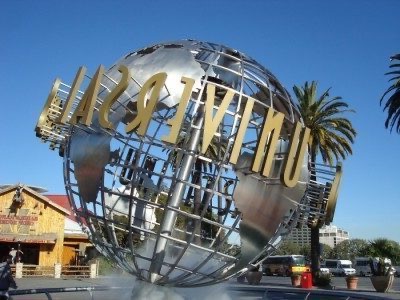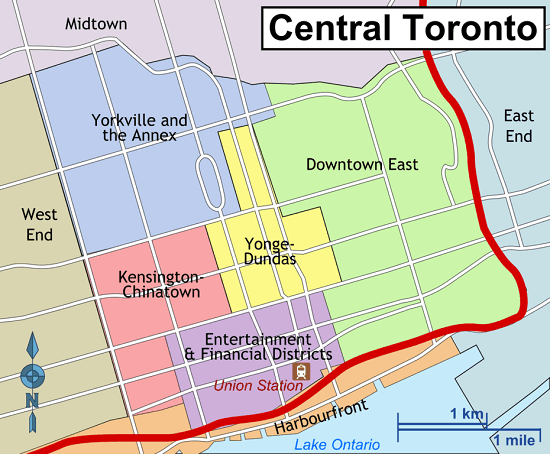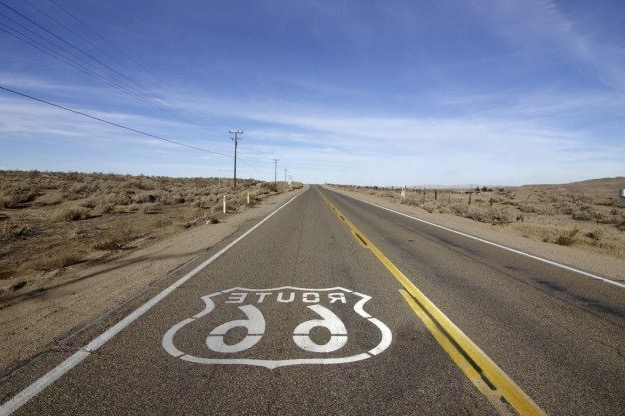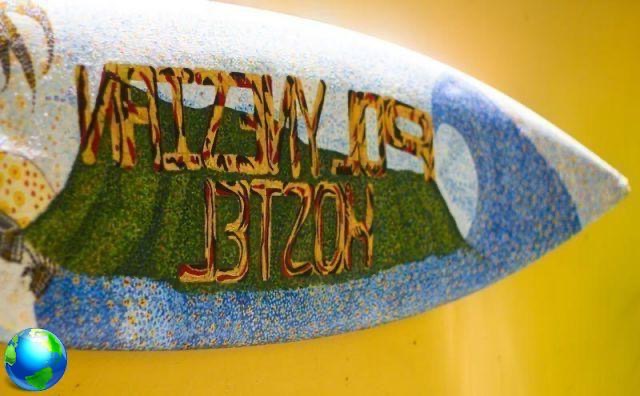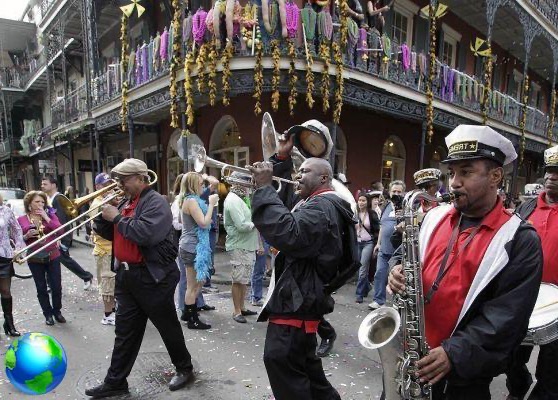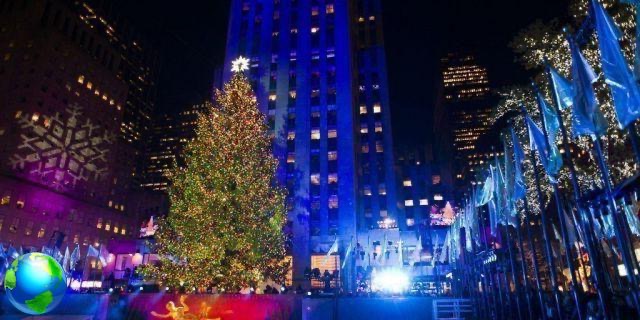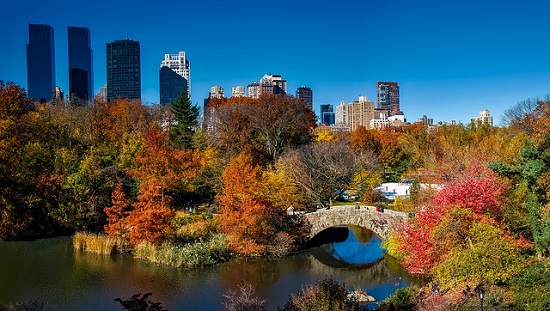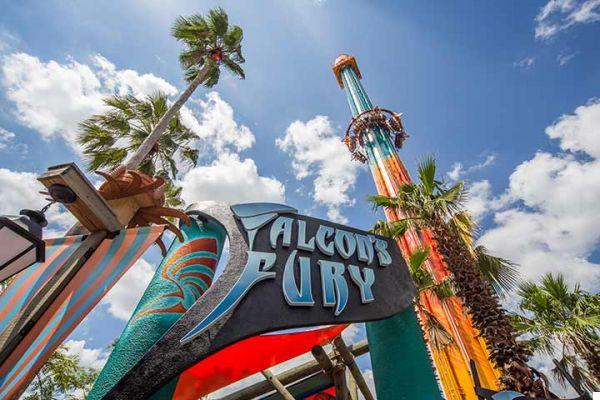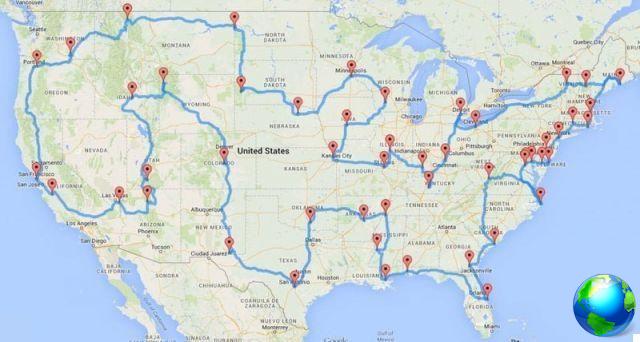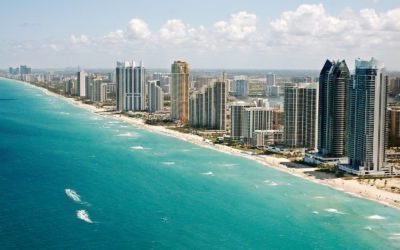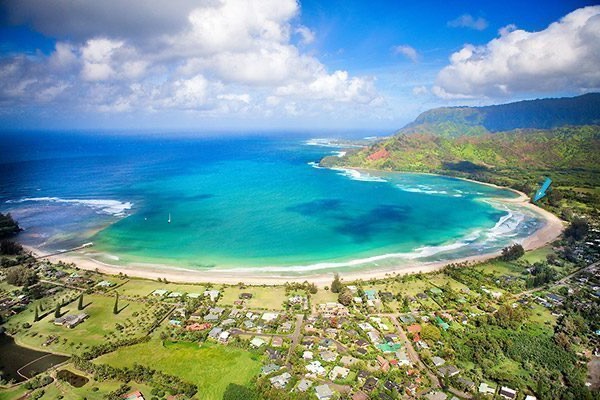La Death Valley it is one of the largest parks in the United States and, contrary to what it seems at first glance, it is not just a huge expanse of desert. The fauna and flora are particularly rich. Let's find out what to see in Death Valley, which points not to miss during the trip.
Known for its breathtaking landscapes, the discovery of Death Valley National Park allows you to admire vast expanses of desert valleys, huge sand dunes, incredible geological formations shaped by millions of years and numerous canyons.
The landscapes are extremely varied and the exploration of the park can take several days if you want to discover the more remote areas. But the good news is that even with just one day available, you can visit many of the most beautiful sites in the legendary Death Valley!
- Discover the complete guide on how to visit Death Valley on our dedicated article
Here are the main points to see in Death Valley:
What to see in Death Valley
It must be said that going from one site to another is already a spectacle in itself: the blue of the sky, the asphalt of the road that seems to extend to infinity, the vastness of the valley that makes you feel (really) very small. , this feeling of having landed on Mars ...
The park is very large, but the most interesting part is the southern part. The visits and activities not to be missed are:
- walk through it Badwater Road and enjoy the different points of interest along this route: Badwater, Devil's Golf Course, Artist's Drive, Artist's Palette.
- watch the sunset or sunrise on Zabriskie Point o Dante's View.
- explore the sand dunes of Mesquite Flat Sand Dunes.
South part
Zabriskie Point
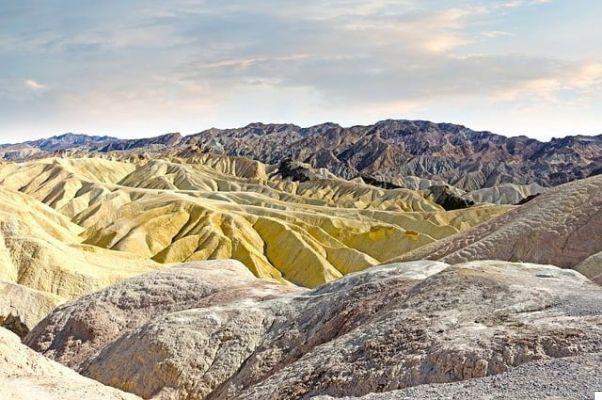
It is located between the park's east entrance and Furnace Creek Visitor Center. There are no words, the views are spectacular and the colors that you can see in the photos, almost do not do justice to reality.
From the car park to the lookout point it is about 100 meters on foot (uphill), and from the car park you can make some paths to visit the Golden Canyon or go around the Badlands.
Artist's Drive
It is located 11 miles south of Furnace Creek, off Badwater Road. Artist's Drive is a winding one-way street (closed to vehicles over 7,7m in length) that is particularly pleasant to drive through, allowing you to admire beautiful landscapes.
Halfway, you can stop at the lookout point Artist's palette, where the rock, loaded with metals such as iron or manganese, takes colors from red to green, with orange and white shades.
Badwater Basin
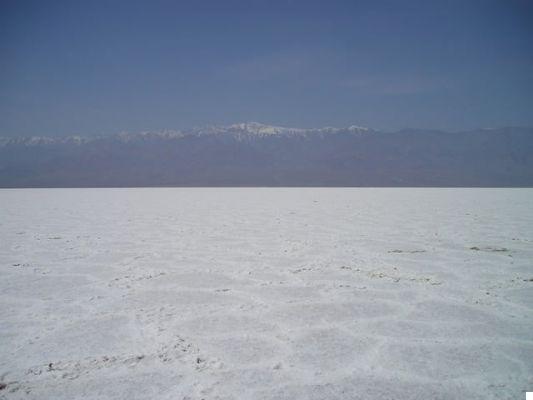
The Badwater Basin salt flats are considered to be the lowest point in North America, with a height of 86 meters below sea level. Once near the entrance, look up the mountainside for the “sea level” sign to get an idea of how low this valley is.
It is a huge expanse of salt created by evaporated water. The salt flats extend as far as the eye can see (5 miles) so it is not advisable to go all the way. As soon as the concentration of salt increases, you begin to see the classic circles that are formed. Come well prepared with sunscreen, hat and water. It is one of the main things to see in Death Valley.
Dante's View
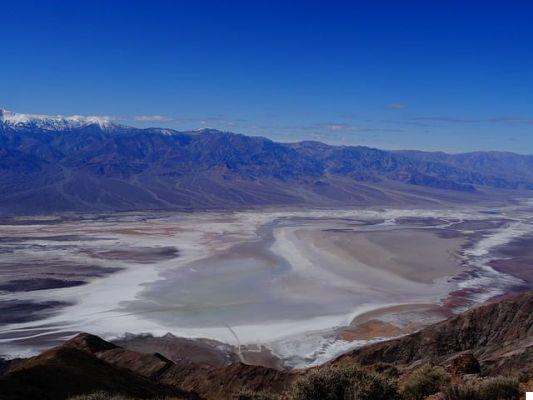
This is a lookout point, for which you have to deviate a little from the main road, the 190, but it is worth it, as it gives you a spectacular view of the entire valley. Dante's View is one of the highest points in the park (1600m asl) and is the ideal place to get an idea of the natural beauty of Death Valley.
The views are fantastic and here is one of the few places where you have good cell phone reception. In winter, the weather can be a bit chilly at these altitudes, and strong winds make a jacket a must.
Golden Canyon
The Golden Canyon hike begins along CA178, between the Artist's Drive exit and Furnace Creek. The 2-mile hike is easy and goes through a canyon with yellow-orange hues. To be done at the end of the day to get even more spectacular colors.
Furnace Creek
It is the visitor center of the Valle de la Morte, where you can pick up the typical newspaper of the park with a map included. You will also find information on the weather conditions of the day and the itineraries recommended or not. You can buy a souvenir or even something to eat if you left without provisions.
There is a small gas station next to the visitor center which we recommend only using if you haven't filled up before, as the gallon sells for the price of gold. So it's best to refuel before arriving at the park!
Central part
Mesquite Flat Sand Dunes
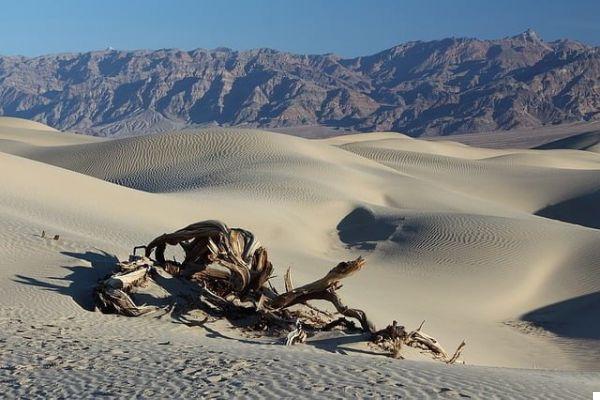
This is another major attraction to see in Death Valley. These vast sand dunes lie 2 to 3 kilometers east of Stovepipe Wells Village and are one of the highlights of Death Valley. Walk to the highest dunes (30m) to get a good view, but try to go at sunrise or sunset so as not to suffer from the strong heat of the central hours.
Wear closed and comfortable shoes; even if the dunes are quite solid and you won't sink into the sand with every step, the sand may get into your shoes. Watch out for snakes.
Mosaic Canyon
It is located on Route 190. Many people are content to walk into the entrance of this canyon, far enough away to reach the first narrow section with its beautiful shiny, shaped rocks. However, feel free to hike further on if the family makes it.Darwin Falls
These are two waterfalls in the middle of Death Valley (although more difficult to reach, the upper falls are more impressive). They are located west of Panamint Springs. To get there you have to take a 2,5 mile dirt road to reach the trail, then walk 1 mile to the waterfall. To do if you are not in a hurry.Ballarat Ghost Town
Do you love exploring abandoned places? There are several ghost towns to visit around the Death Valley. Ballarat, in the late 1800s, housed 400 to 500 people, and functioned primarily as a supply town for prospectors and workers in nearby mines. It was also the place to come for a party, as it was home to at least seven saloons. Today most of the original buildings are gone, but there are still a few to see.
North part
Titus Canyon
The 26-mile hike through Titus Canyon is the combination of everything that makes Death Valley interesting: colorful rocks, rugged mountain slopes, sheer cliffs, rare plants, petroglyphs - even the ghost town of Rhyolite! Before you go, ask a ranger about road and weather conditions, as the canyon is prone to flash flooding.
Racetrack Playa
The Racetrack Playa is one of the most mysterious places in Death Valley! This is a dry lake, known for its mobile rocks that move by themselves on its surface for reasons that remained mysterious until 2014! A study has shown that the stones slide on thin sheets of ice (we are at 1130m above sea level) thanks to the action of the wind.
To get there, you need to leave Gravepine Peak north of the park and take Racetrack Road past Ubehebe Crater. It is a 43km route on which it is advisable to have a 4 × 4 as the route is known for its sharp cobbles.
Scotty's Castle
It's a huge Hispanic-style house that engineer Walter Scott built, presumably with the money he made from mining Death Valley. Currently the road that goes up there has been damaged by heavy rain, so you won't be able to visit it until 2020.
Ubehebe crater
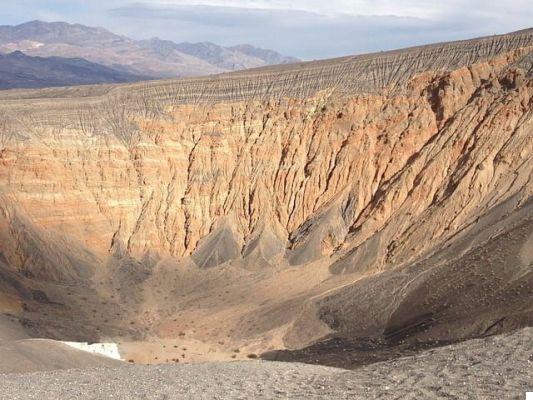
Near Scotty's Castle is a huge volcanic crater (240 meters deep and 800 meters in diameter). From the parking lot you can enjoy a wonderful view. It is also possible to descend into the crater (the climb will be much more difficult than the descent) or walk along the edge of the crater.
- Discover the complete guide on how to visit Death Valley on our dedicated article
What to see in Death Valley - Travel tips
Trails - Death Valley National Park is crisscrossed by numerous trails, many of which are only accessible by 4 × 4. Following the trails is a good way to discover the park in depth. Before starting your visit, ask the Visitor Center for the state of the roads.
Pay attention to the temperatures that are infernal in summer and that prevent some from fully appreciating this park ...
Count a day (or 2 half days) to make the main viewpoints and take two or three small excursions.
If possible, plan to spend at least one night in the park to enjoy the views at dusk and dawn.
Death Valley National Park is an isolated park that is difficult to combine with other sites. The park can be an interesting destination in between Las Vegas and the east entrance of the Yosemite National Park.
- Find out how to visit Death Valley with the America the Beautiful card
